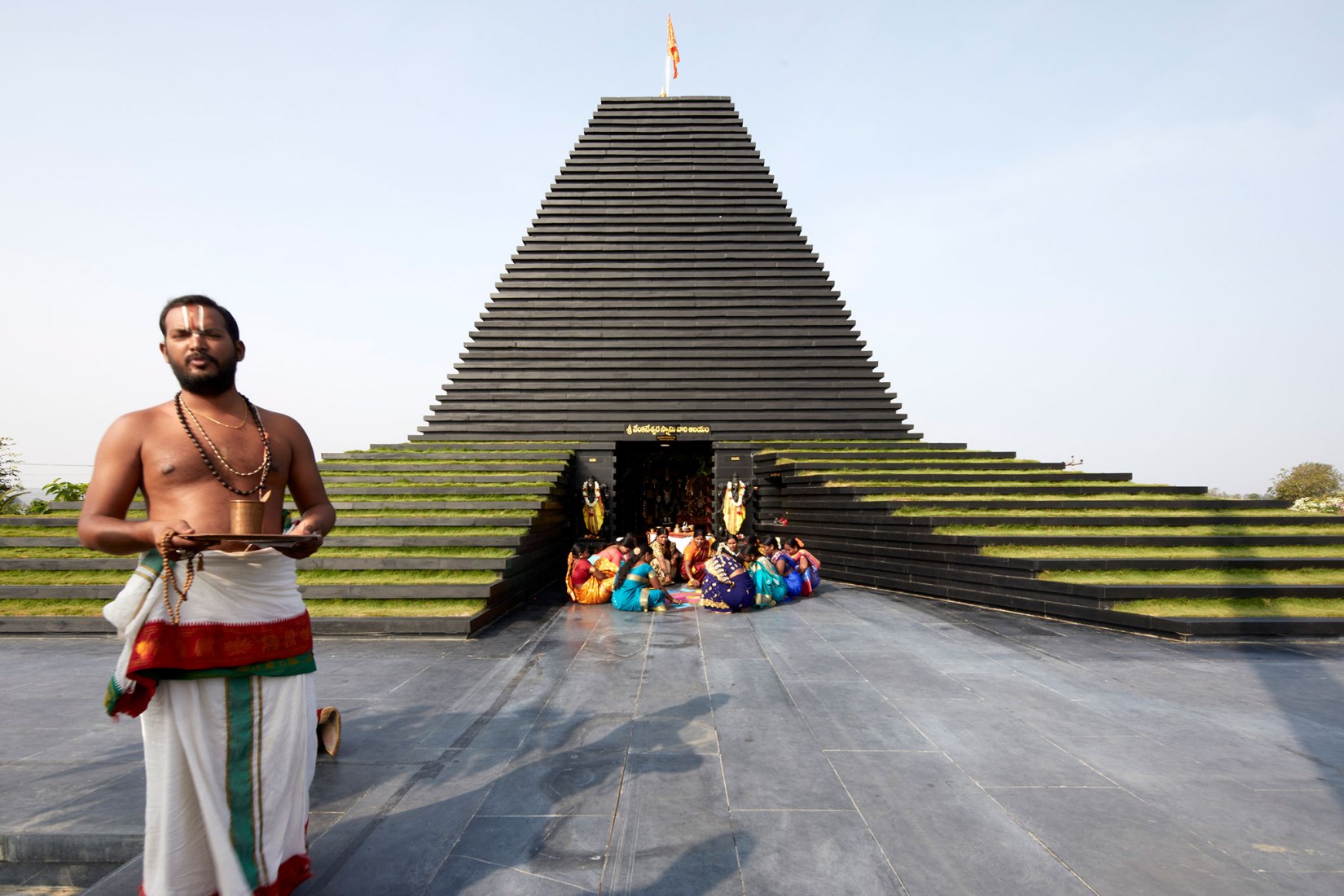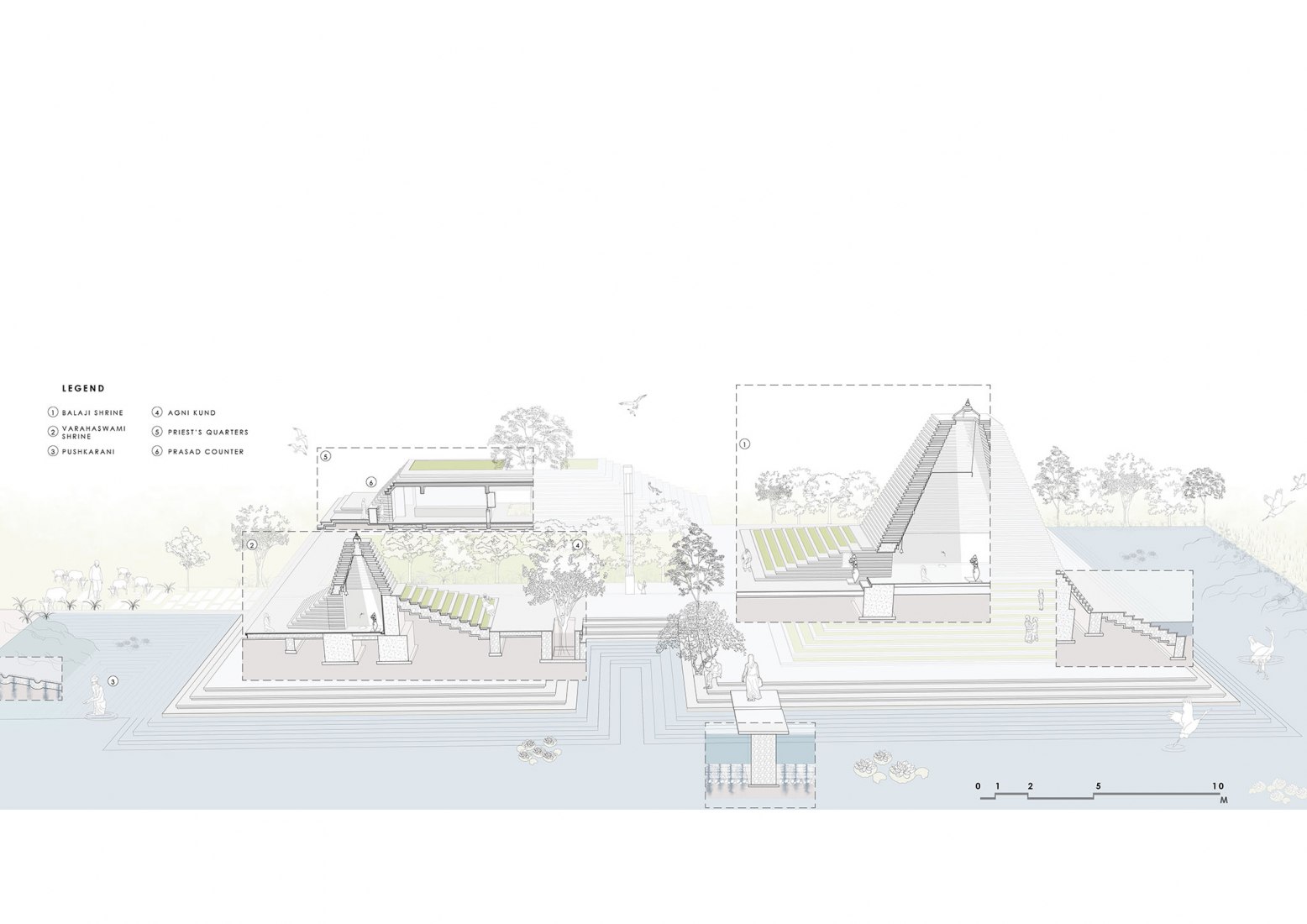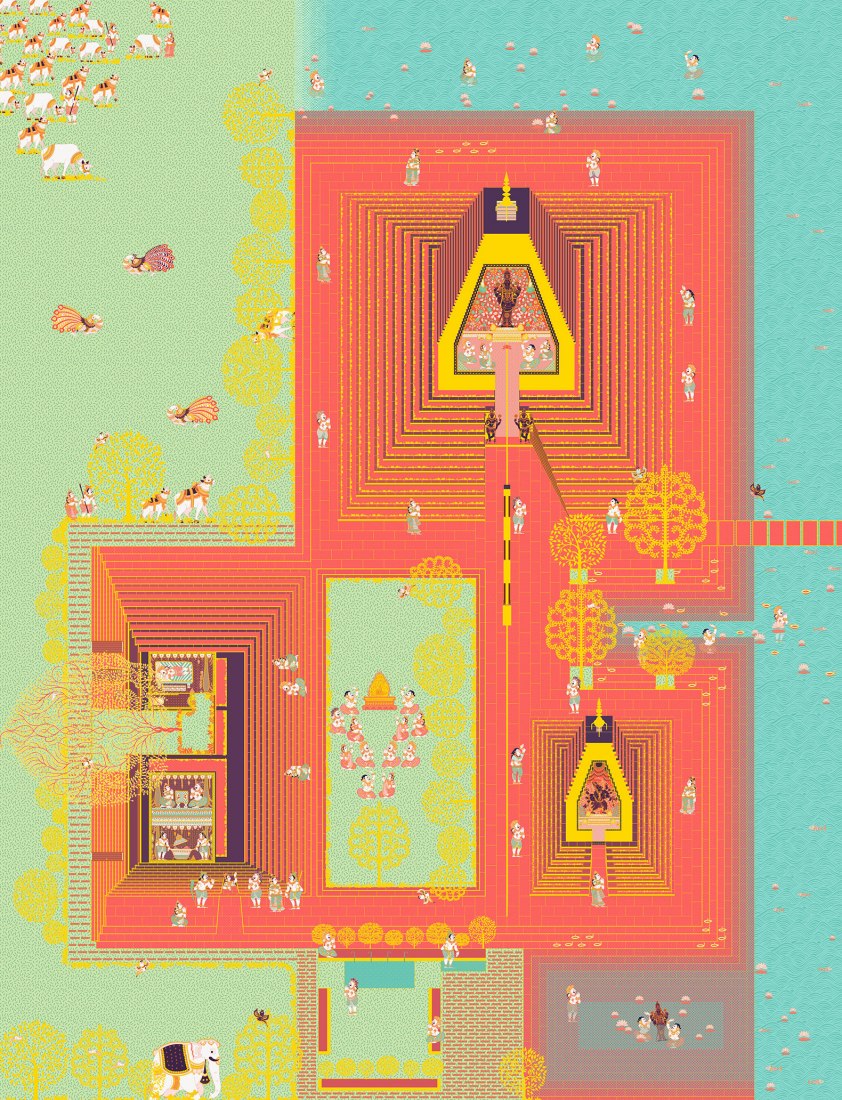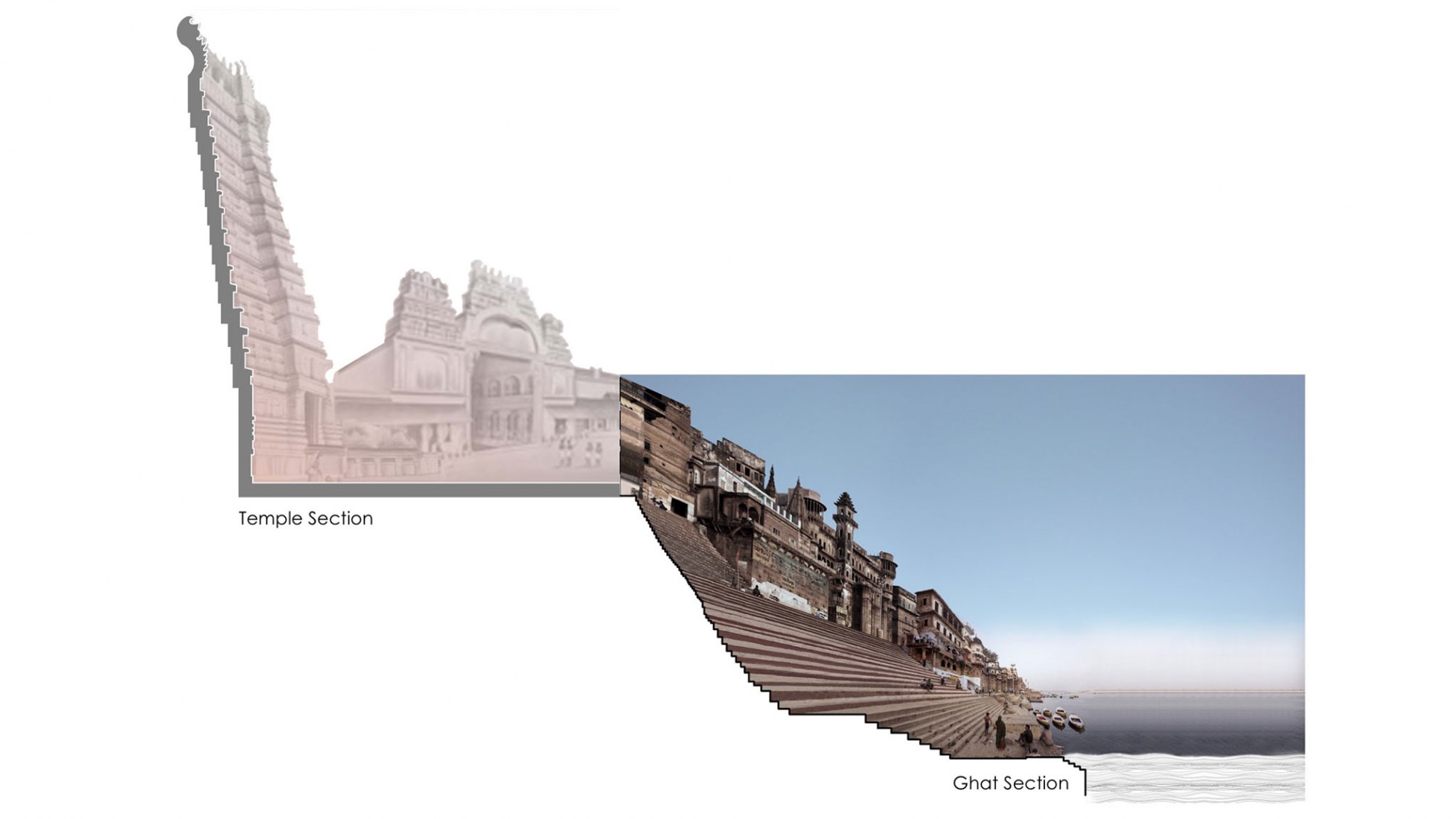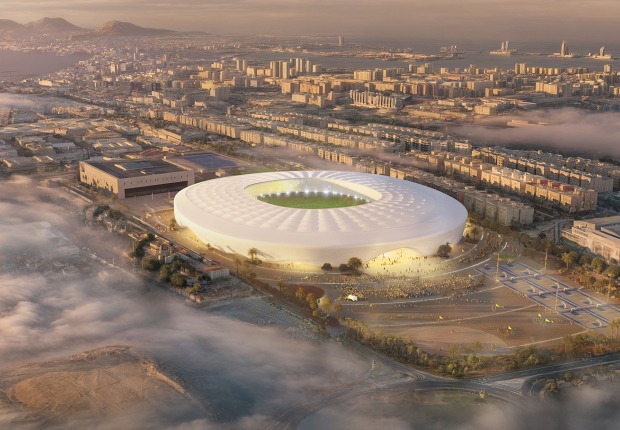In the project, the use of horizontal layers or corbels is an abstraction of how Hindu temples have employed these corbels to achieve verticality and yet at the Balaji Temple by making the form rise gradually from the ground it destabilizes the notion of the temple as a simple figure-ground.
Description of project by Sameep Padora & Associates
The brief was to design a temple for the residents of villages around Nandyal. In the dry terrain of Nandyal, the main concern was to provide a space which would marry the socio-cultural expectations of a temple with the ecological framework and dynamics of and around the site.
The immediate context of Cotton and chilli farms in the region were fed by a natural canal system which had dried up. The ecological strategy for the temple, thus began with recharging of groundwater. Water overflow from the limestone quarries was led to a low-lying recharge pit or ‘kund’: the banks of which was imagined as a social space, in the manner of a traditional ghat ; a flight of steps leading down to a waterbody.
This negotiation of land and water with steps is a significant part of India’s architectural heritage as is seen in the ghats of the ancient city of Benaras.
The planning of the temple itself was based on a 10th century temple for the same deity at Tirupathi in Southern India and similarly includes the Balaji & Varahaswamy shrines and a Pushkarini (water tank).
The construction process uses locally available black limestone slabs corbelled to form the main body of the temple. The same corbelled profile also incorporates soil and planting in the lower half of the temple body to buffer against the heat and finally this stone corbelling turns into a ghat i.e the steps that access the water.
- Project Critique by Praveen Bavdekar.- Principal, Third Space Studio I MArch. DRL Architectural Association
The Balaji temple in Nandyal explores and abstracts the long tradition of the temple typology in India.
The architectural philosopher Andrew Benjamin wrote that every act of design was a act of repetition, and that architecture is about exploring what not to repeat. This building too repeats or emulates certain tropes of the Hindu temple so that it is recognizable as a temple yet it doesn’t replicate those tropes but rather breaks them down to constituent parts to then again reconstruct it.
One looks at the relationship of the temple and the kund (stepped water tank), as a contradictory yet complementary one of binary opposites. It is a relationship between a solid and a void, between reaching out to the sky and going deep into the ground about accretion and excavation.
This relationship which is so obvious often is unnoticed. Here by employing the same architectural device (steps or corbels), one makes this explicit and yet delightfully abstract. Suddenly, it becomes obvious that the kund (stepped water tank) is the inverted negative of the shikhara (spire) and it leads one to reread this whole dialectic between the two, even in the temples of the past.
The use of horizontal layers or corbels is an abstraction of how Hindu temples have employed these corbels to achieve verticality and yet at the Balaji Temple by making the form rise gradually from the ground it destabilises the notion of the temple as a simple figure ground.
This gradual rise echo’s perhaps the protohistoric roots of the shikhara (spire) as a simple gravity driven primordial mound/pyramid.
Jacques Herzog talks about how he encountered an architecture in India, which has a very different concept of space. Unlike the western or Islamic project of space where they try to achieve maximum interior spatiality through minimum structure, in India he encountered an architecture where the interiors were almost carved out and the buildings had an intentional heaviness to them. While he was being very facile at some level this ‘weight’ and ‘carved void’ seems to find echo in the Balaji Temple.









